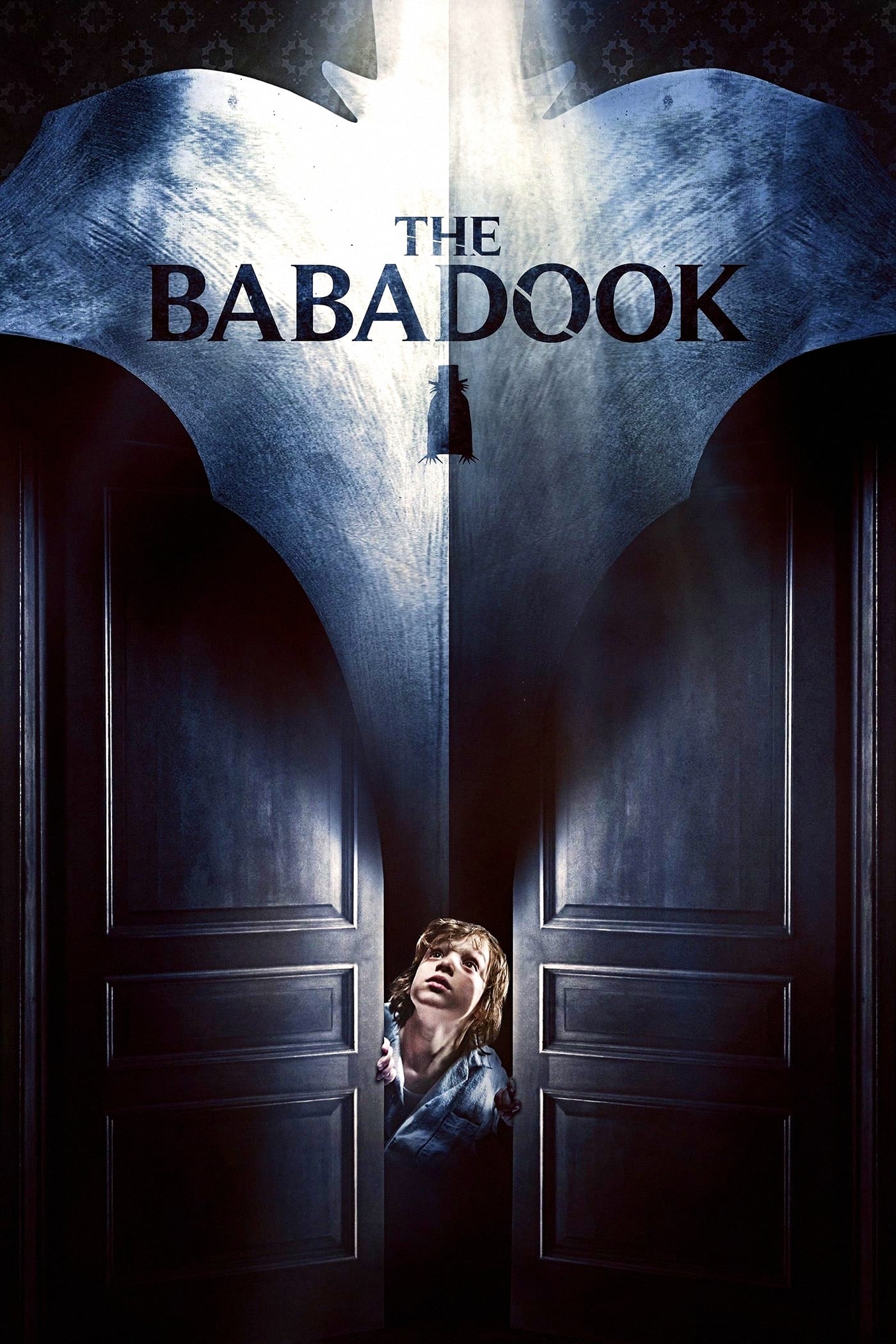Spoilers:
- The Babadook is grief manifest.
- Amelia kills the dog in rage.
- The Babadook terrorizes the family.
- Amelia imprisons the Babadook in the basement.
- The creature comes from a mysterious book.
- Amelia’s husband died driving her to the hospital.
- Sam struggles with behavioral issues at school.
The Babadook: Statistics Overview
Basic Information
- Title: The Babadook
- Release Year: 2014
- Director: Jennifer Kent
- Genre: Horror, Thriller
- Runtime: 94 minutes
Box Office
- Budget: Approx. $2 million
- Box Office: $10.3 million
Critical Reception
- Rotten Tomatoes: 98%
- Metacritic Score: 86/100
Key Cast
- Essie Davis as Amelia
- Noah Wiseman as Samuel
- Daniel Henshall as Robbie
Accolades
- AACTA Awards: Best Direction
- New York Film Critics Circle: Best First Film
Jennifer Kent’s “The Babadook” bravely blurs the lines between horror and psychological drama. It’s not only a hair-raising tale of supernatural manifestation but also a heart-rending narrative about grief and motherhood. Amelia, the tortured protagonist, embodies the duality of maternal love and exhaustion, intensified by her unprocessed loss and encroaching fear symbolized by the Babadook.What sets this film apart is its stunning ability to transform the concept of a traditional monster into a depiction of the human psyche’s dark corners. The Babadook, a menacing storybook character, isn’t just a monster, but a metaphor for Amelia’s unresolved mourning, denial, and repressed anger. This intelligent film uses horror to illuminate mental health issues, demonstrating an insightful understanding of the complexities of the human emotional landscape.Kent imbues every moment with tension and uncertainty, using chilling soundscapes and haunting visuals to keep audience members on edge. The stark monochromatic visual palette evokes a sense of melancholic despair, while angular and confined cinematography amplifies Amelia’s trapped state of mind. The film’s climax is shockingly profound, eschewing the typical horror trope of outright destruction of the antagonist. The Babadook cannot be exorcised or defeated; instead, it is accepted, suggesting that trauma isn’t something that can be simply overpowered – it must be acknowledged and lived with. “The Babadook”, provocative in its emotional depth and psychological revelation, compels viewers to confront their monsters- both literal and psychological. Kent’s mastery of carefully constructing a tale that is both terrifying and empathetic gives us a unique horror parable that seeks to evoke not just fear but understanding and empathy, making a lasting impression that goes beyond the initial terror. This is surely a film that lingers in your thoughts – and perhaps your own shadows – long after the credits roll.
Introduction to “The Babadook”
“The Babadook” is a 2014 Australian psychological horror film written and directed by Jennifer Kent in her directorial debut. This film emerged as a standout in the horror genre due to its unique narrative and haunting imagery, primarily exploring themes of grief and motherhood.
Interesting Facts
- Low Budget Gem: Made on a modest budget of around $2 million AUD, “The Babadook” went on to earn over $10 million globally, proving its financial success.
- Origin Story: The film is based on Kent’s 2005 short film, “Monster,” which shares similar themes and visual elements.
- The Book: The pop-up book featured in the movie, “Mister Babadook,” became a sought-after item. Limited editions were even sold to fans.
- Cultural Meme: In a bizarre turn, “The Babadook” became an LGBTQ icon on social media. It started as a joke but morphed into a symbol of pride for some communities.
Speculation and Analysis
Speculation surrounds the mysterious nature of the Babadook entity itself. Some viewers interpret it as a manifestation of unresolved trauma, while others see it as a physical embodiment of grief and depression.
The film’s ending sparks debate. Is the Babadook truly conquered, or merely controlled? This ambiguity fits with the film’s psychological horror angle.
Public Perception Over Time
Upon release, “The Babadook” received critical acclaim for its atmospheric tension and psychological depth. As time passed, it garnered a cult following, praised for subverting standard horror tropes.
Initially, it may have bypassed mainstream audiences due to its unique style. However, reassessment over time has placed it among the modern horror classics. It’s viewed as a thoughtful analysis of the human psyche rather than a conventional horror flick.
The Babadook: Quick Beat-Down
Creepy Book Discovery: Amelia and her son Samuel find a sinister book, “Mister Babadook”. It’s weird, it’s creepy, and it’s just the beginning.
Samuel’s Descent: Kid starts acting out big time—nightmares, aggressive behavior, the full monty. He insists the Babadook is real and coming for them.
Amelia’s Struggle: Between Samuel’s behaviors, her job, and her own mind messing with her, Amelia’s on the brink. Life’s tough when you’re a widow on edge.
The Babadook Creeps In: Strange occurrences kick up a notch. The Babadook’s presence is more than just a child’s nightmare now.
Isolation: Friends and family are out. It’s just Amelia, Samuel, and their shadowy tormentor. The world shrinks to their house of horrors.
Amelia’s Possession: The Babadook doesn’t just haunt; it takes over. Amelia becomes an unwilling puppet, giving a new meaning to “mom’s gone wild”.
Samuel’s Fight Back: Kid’s got guts. Armed with homemade weapons and traps, Samuel takes on the Babadook and his possessed mom. Talk about home security.
The Showdown: In a cathartic clash, Amelia confronts her grief and the Babadook—a metaphorical and literal battle in their creepy basement.
Living with the Babadook: They don’t kill it; they contain it. The Babadook is boxed but lingers, representing the ever-present nature of their grief and trauma.
Wrap: Life goes on, but the shadows linger. Amelia and Samuel learn to live with their dark guest, suggesting hope and healing can come from the deepest fears.

The Babadook: An Analysis
From the first frames, “The Babadook” sets a haunting tone. The opening scenes introduce Amelia and her son Samuel, building their strained relationship within a claustrophobic, dimly lit environment. The story feels immediate. The horror isn’t just from what lurks in the shadows, but from the emotional weight carried by these characters. A nightmare unfolds within their mundane life, creating a chilling blend of grief and motherhood.
Story Formula Breakdown
“The Babadook” follows a classic horror structure, albeit with a psychological twist. Here’s a breakdown:
- Exposition: Introduces Amelia and Samuel, establishing their isolation and loss. Amelia’s husband died in a car accident while driving her to the hospital. This foundational event shapes their world.
- Inciting Incident: The arrival of a mysterious pop-up book presents the Babadook, initiating tension and dread. Samuel believes the entity is real, leading to escalating fear.
- Rising Action: As the story progresses, Amelia’s mental state deteriorates; the Babadook becomes more intrusive. Amelia’s struggles with grief and her son’s behavior manifest as supernatural incidents.
- Climax: The confrontation between Amelia and the Babadook culminates in a visceral battle during a terrifying moment, revealing the horror lies within her mind as much as outside.
- Falling Action: The aftermath shows Amelia grappling with the effects of the confrontation. Acceptance of her grief starts to shape a new reality.
- Resolution: The Babadook is contained but not destroyed, suggesting that trauma is an ongoing part of life. Amelia finds a new understanding of her struggles.
Character vs. Story Driven
“The Babadook” is primarily character-driven. The horror stems from Amelia’s internal conflict and the trauma both she and Samuel endure. This is not just a monster movie; it’s a deep dive into grief and mental illness. The story allows viewers to connect with the characters on an emotional level, making the psychological horror more impactful.
Memorable Characters
The driving characters in “The Babadook” stand out due to their depth and the realism of their struggles.
- Amelia: A widowed mother burdened by loss and overwhelming responsibilities. Her emotional journey is deeply relatable, fluctuating between rage, despair, and occasional affection for her son.
- Samuel: A troubled young boy who feels isolated. He represents innocence but also embodies the chaos that comes with trauma. His attachment to his mother is profound, yet strained.
- The Babadook: A manifest representation of Amelia’s grief. The creature itself is an embodiment of her unresolved issues, making it both an antagonist and a symbol.
Story Flow Template
Follow this template for a character-driven horror story:
- Opening Scene: Introduce main characters and their environment. Establish emotional tone.
- Backstory: Provide context surrounding characters’ struggles. Use flashbacks or dialogue to convey past trauma.
- Inciting Event: Introduce a triggering event that disturbs the status quo, leading to conflict.
- Rising Tension: Show the protagonists’ mental and emotional decline as they confront the external threat. Let their fears manifest.
- Climactic Confrontation: Present a pivotal moment where characters confront their fears. This should reveal their inner struggles.
- Character Resolution: Show change in the main characters post-conflict. They should gain insight, accept losses, or redefine their relationships.
- Final Image: Conclude with an impactful moment that reflects the themes of the story. Leave the audience with lingering questions or emotions.
Simplified Story Explanation
In simple terms, “The Babadook” is about a mother who is haunted by grief after losing her husband. Her unresolved emotions manifest as a monstrous presence that terrorizes her and her son. The film explores themes of loss, mental health, and the struggle of motherhood, showing how facing one’s fears is crucial for healing.
This combination of internal and external horror, along with strong character development, makes “The Babadook” a standout in the genre. The emotional impact resonates long after the credits roll, leaving a lasting impression that challenges viewers to confront their own fears.
In-depth Character Analysis
Each character plays a crucial role in conveying the overarching themes of the story. Below is a deeper look at each character’s motivations and arcs.
- Amelia: Haunted by the past, Amelia represents the struggles many face when coping with loss. Her character showcases a descent into darkness, reflecting the struggles of a mother trying to maintain stability for her son while battling her inner demons. The audience feels pity for her, understanding the weight of her grief and how it influences her actions.
- Samuel: As a child, Samuel embodies innocence and vulnerability. His fears of the monster mirror the realities of his life—feeling abandoned, misunderstood, and scared. His attachment to Amelia showcases their co-dependent relationship, which drives much of the film’s emotional tension. He is both a foil and a catalyst for Amelia’s character development.
- The Babadook: The titular entity is more than a monster; it’s a personification of hidden trauma. Its unrelenting presence forces Amelia to confront her suppressed feelings about her husband’s death. The Babadook isn’t just a terrorizing figure but rather a necessary element for growth and acceptance, reflecting Amelia’s fierce denial of her grief.
Significant Themes
“The Babadook” is rich with themes that resonate across different audiences. The significance of these themes cannot be understated.
- Grief and Loss: The film poignantly explores how unresolved grief affects individuals. Amelia’s journey illustrates how pain can manifest in various forms, impacting loved ones.
- Motherhood: The struggles of motherhood are exhibited through Amelia’s character. It portrays both the burdens and the unconditional love inherent in that role, highlighting the complexities faced by a single parent.
- Mental Illness: The film comments on mental health issues, depicting Amelia’s deteriorating state. It raises awareness about the stigma surrounding mental illness and the importance of facing one’s fears.
- Domestic Horror: Rather than traditional horror settings, “The Babadook” finds terror within the home, showcasing how familiar spaces can become nightmarish when influenced by trauma.
Visual and Auditory Techniques
The film employs various cinematographic elements to enhance the horror narrative. These techniques contribute significantly to the overall experience.
- Lighting: The use of shadows and dim lighting reflects the internal struggles of the characters, creating an atmosphere of dread and discomfort.
- Sound Design: Sound plays a critical role in building tension. The score often heightens anxiety, with creaks and whispers amplifying the horror elements.
- Camera Angles: The use of close-ups on Amelia’s face captures her turmoil and fear. It draws the audience into her emotional space, making the horror feel personal.
Comparative Analysis
When stacked against other horror films, “The Babadook” stands out due to its psychological depth. Films like “Hereditary” or “The Witch” share similar themes of trauma and family dynamics.
- Hereditary: Focuses on family trauma but leans more on supernatural horror. Both films showcase the deterioration of familial relationships under pressure.
- The Witch: Examines religious hysteria and paranoia within a family. While it emphasizes external influences, it lacks the emotional resonance found in “The Babadook.”
Ultimately, “The Babadook” succeeds where many horror films do not. It doesn’t solely rely on jump scares or gore; it intertwines genuine emotional depth with horror, creating a profound cinematic experience.
Audience Reception and Impact
“The Babadook” was received well, both critically and among audiences. It sparked discussions around mental health, grief, and the nuances of motherhood.
- Cult Following: Over time, the film has developed a cult following, appreciated for its ability to transcend the genre and explore heavy themes.
- Critical Acclaim: Many praised Jennifer Kent’s direction and Essie Davis’s performance. The film shines as a character study more than a simple scare-fest.
Final Thoughts
In an era where horror often focuses on shock value, “The Babadook” remains a refreshing example of how the genre can address deeper emotional issues. It’s a powerful reminder that monsters can dwell within us, and confronting our fears is part of healing. The film levels a critique of how society handles grief, making it more relevant today than ever.
Heralded as a modern masterpiece, “The Babadook” is not only a horror film but a meditation on loss and acceptance. Its exploration of motherhood through the lens of grief resonates with many, ensuring its place in contemporary cinema.
This examination showcases the complexity of storytelling in horror, allowing it to be both a scare and a thoughtful reflection on the human experience.
Inciting Incident
The inciting incident in “The Babadook” is the arrival of the book, “Mister Babadook.” It’s not just a book; it symbolizes grief and trauma. Amelia, the mother, struggles with the death of her husband, and the book manifests her suppressed emotions. The moment she reads it, the tone shifts—it propels her into chaos.
Act Structure
The movie follows a classic three-act structure:
- Act 1:
Introduces Amelia and her son Samuel. Their strained relationship and the impact of her husband’s death are revealed. The Babadook book makes its first appearance.
- Act 2:
The tension escalates. Samuel becomes increasingly fearful. Amelia’s mental state deteriorates. This act showcases her struggle between love and resentment towards her child. The Babadook represents her haunting grief.
- Act 3:
Pivotal confrontation with the Babadook. Amelia comes to terms with her grief. The final scenes reflect acceptance rather than defeat, symbolizing that acknowledging pain can lead to healing.
Climax
The climax occurs when Amelia fully succumbs to the Babadook. She verbally confronts it in a fit of rage. The emotional capital is intense; it captures her internal battles. The build-up to this moment is gradual—her isolation, inability to cope, and increasing tension between her and Samuel create a smothering atmosphere.
Tension and Release
The film builds tension through:
- Subtle sound design— eerie noises increase discomfort.
- Visual composition— shadows and framing isolate Amelia and Samuel.
- Character dynamics— the mother-son relationship is fraught, amplifying anxiety.
Release comes in fits; moments of relief are often short-lived. The horror lies in the cyclic return to despair. The final acceptance scene provides a bittersweet release, acknowledging that moving forward involves facing dark truths.

The Ending of The Babadook Explained
The ending of “The Babadook” shows Amelia finally confronting the monster, which symbolizes her grief and trauma. Instead of trying to destroy it, she acknowledges it. In the final scene, the Babadook is kept in the basement, indicating it will always be a part of her life but won’t control her.
Writers’ Categorization
This ending can be categorized as cathartic and transformative. It reflects a significant change in both the character and the narrative tone.
Symbolic, Thematic, and Speculative Meanings
- Symbolic: The Babadook represents unprocessed grief and mental illness.
- Thematic: Themes of motherhood, loss, and acceptance are prevalent. Accepting pain rather than ignoring it is crucial for healing.
- Speculative: It explores what happens when trauma is ignored—it can manifest into something monstrous.
Loose Ends and Payoffs
The ending resolves Amelia’s struggle with her late husband’s death and her relationship with her son, Samuel. The fear of the Babadook is brought under control, showing that facing fear diminishes its power.
Character Changes
Amelia transforms from a broken, overwhelmed mother to someone who takes ownership of her grief. Samuel matures, understanding more about his mother’s pain and standing by her.
Writer Takeaways
Writers can learn the importance of addressing themes of mental health and trauma. Creating a tangible representation of internal struggles can lead to a resolution that feels real and meaningful. Emphasizing character growth through confronting fears can provide a powerful narrative arc.
Dialogue Style in The Babadook
The dialogue in “The Babadook” is raw and emotionally charged. It reflects the main themes of grief, motherhood, and the struggle with mental health. The exchanges between Amelia and Samuel are often tense, revealing their fraught relationship.
Examples of Dialogue
Here are a few notable lines:
- “It’s not a monster, it’s a friend.” – Samuel
- “You can’t get rid of the Babadook.” – Amelia
- “Do you want to die?” – Amelia
- “I’m going to make you a sandwich.” – Amelia
Quintessential Character Moment
A defining moment happens when Amelia breaks down, revealing her frustrations and fears. This scene encapsulates the tension and the emotional turmoil of motherhood—especially as she struggles with the memory of her deceased husband.
Dialogue Uniqueness
The dialogue is unique due to its bluntness and emotional weight. Characters often express their feelings without pretense, making it relatable and tension-filled. The combination of fear and vulnerability is a consistent theme.
Dialogue Heavy Script
The script is dialogue-heavy, but it effectively uses pauses and silences to enhance emotional depth. Not every scene is saturated with speech, allowing moments of quiet reflection.
Realism of Dialogue
The dialogue feels genuine. It captures the frustrations of parenting and the complexities of grief. Conversations flow like real-life exchanges, even in their escalation.
Lessons for Writers
Writers can learn to:
- Emphasize subtext—a character’s intentions are often as important as what is said.
- Use dialogue to show character relationships and tension.
- Mix emotional honesty with everyday dialogue to ground fantastic elements.
Scene Breakdown: Aldo’s Birthday Party
In a pivotal scene at Aldo’s birthday party, Samuel misbehaves out of fear and frustration. During the dialogue, Amelia tries to manage the situation but ends up lashed out at him. The escalation between them captures the maternal struggle.
Amelia’s frustration:
“I told you to behave!”
Samuel replies:
“I can’t! The Babadook won’t let me!”
This exchange reveals Samuel’s fears stemming from the grief surrounding his father’s death. The tension heightens when Amelia snaps, showcasing how her frustrations spill over into their relationship. The dialogue here is simple, yet it beautifully encapsulates the desperation of their situation.
In that moment, we understand the mother’s internal conflict—her love for her son contrasted with overwhelming grief and frustration.
The Babadook
In shadows dense, a whisper grows,
Murmurs of dread in soft, cold prose.
It knocks at dreams, a book unfolds,
A tale of grief in grasping holds.
What’s hidden deep, beneath the skin,
A monster’s grin wears love too thin.
- Pages turn, then hearts will race,
- Between the lines, we find our place.
- In laughter’s echo, fear will dance,
- Embrace the dark, dare not to prance.
To silence it, one must engage,
Face the truths behind the cage.
So read aloud, let others see,
The Babadook is part of me.
Unique Writing Lessons from The Babadook
The Babadook stands out for its sharp narrative choices and character-driven storytelling. Here are some lessons that writers can take away from Jennifer Kent’s work:
-
Character Complexity
Create characters with depth. Amelia isn’t just a grieving mother; she’s a flawed, struggling individual. Her inner turmoil drives the plot.
-
Symbolism Matters
The Babadook itself symbolizes grief and trauma. Use symbols to deepen your story and reflect characters’ inner lives.
-
Emotional Truth over Supernatural Elements
The horror in The Babadook is rooted in real emotions. Prioritize the emotional stakes over the scares.
-
Build Tension Gradually
Don’t rush to the climax. The gradual buildup of dread enhances the impact of the story’s twists.
-
Use of Space and Sound
Pay attention to your setting and its atmosphere. Sound design in the film intensifies the feeling of dread. Use silence and noise meaningfully.
-
Child Perspective
Incorporate a child’s viewpoint without patronizing. Samuel’s fears are authentic and relatable, giving weight to the horror.
-
Direct Dialogue and Monologue
Engage with unfiltered dialogue. Characters express raw emotions, driving authenticity in interactions.
-
Layered Themes
Explore multiple themes. The film tackles grief, motherhood, and mental health, enriching the narrative complexity.
-
Ambiguity in Resolution
Leave some questions unanswered. The open ending invites discussion and reflection, making the story linger in the audience’s mind.
Jennifer Kent’s Discography
- The Babadook (2014) – Feature Film
- Monster (2016) – Feature Film
- Five Came Back (2017) – Short Film
- The Nightingale (2018) – Feature Film
Writing Style
Jennifer Kent’s style blends psychological depth with raw horror, exploring themes of grief and motherhood through unsettling narratives.
Review 1:”The Babadook is that rare beast: a horror flick that transcends the tropes and clichés of the genre to worm its way mercilessly into our nightmares. Tremendously smart and profoundly nerve-racking, it’s unequivocally the most frightening film I’ve seen in a decade.”Source: EmpireLink: https://www.empireonline.com/movies/reviews/babadook-review/Review 2:”The Babadook is a horror movie that offers much more than moments designed to make you jump… this is a movie that is creepy and moving, smart and even amusing, as it explores how people struggle to endure a day-to-day existence blighted by loss.”Source: The GuardianLink: https://www.theguardian.com/film/2014/oct/23/the-babadook-review-horror-jennifer-kentReview 3:”Kent seamlessly merges supernatural and psychological horror while delivering a deft character study. And driven by Davis’ harrowing performance, The Babadook is a deeply affecting exploration of the grieving process.”Source: Rotten TomatoesLink: https://www.rottentomatoes.com/m/the_babadookReview 4:”Chillingly amplified by Davis and Wiseman’s performances, Kent’s refreshingly original horror film uses its monster as a metaphor for mental illness, unearthing dark layers of symbolism and emotional depth rarely found within the genre.”Source: Time OutLink: https://www.timeout.com/movies/the-babadook Review 5:”In her feature debut, writer-director Jennifer Kent creates an allegory of mental illness and grief through her tale of a children’s book monster that comes to life.”Source: Hollywood ReporterLink: https://www.hollywoodreporter.com/movies/movie-reviews/babadook-film-review-680217/
- The Babadook – Wikipedia
- A Conversation with Jennifer Kent (THE BABADOOK 10th …
- The Babadook director Jennifer Kent talks about drawing horror from …
- The Babadook (2014) – IMDb
- Writer-Director Jennifer Kent on the 10th Anniversary of “The …
- The Babadook: ‘I wanted to talk about the need to face darkness in …
- The Babadook 10th Anniversary with Jennifer Kent – Museum of the …
- Jennifer Kent interview: directing The Babadook | Den of Geek
- What happened to Jennifer Kent (writer/director of The Babadook …
- Interview (Written): Jennifer Kent (“The Babadook”) | by Scott Myers …




Leave a Reply